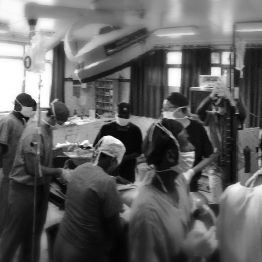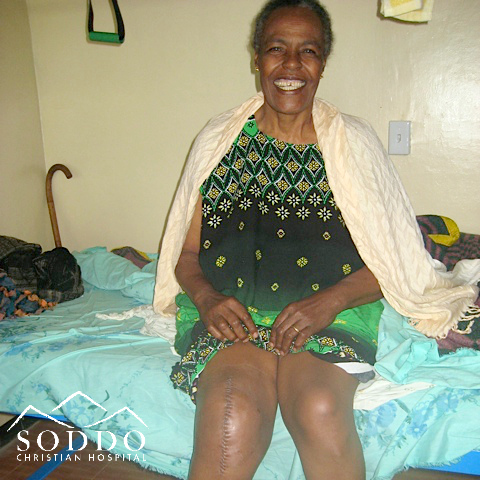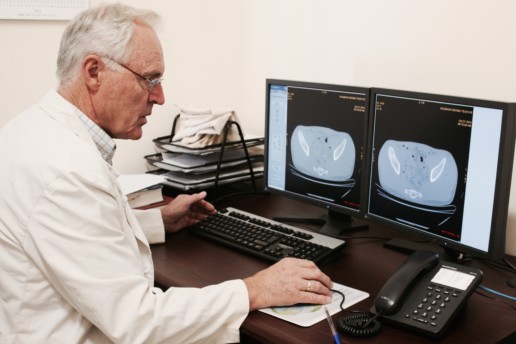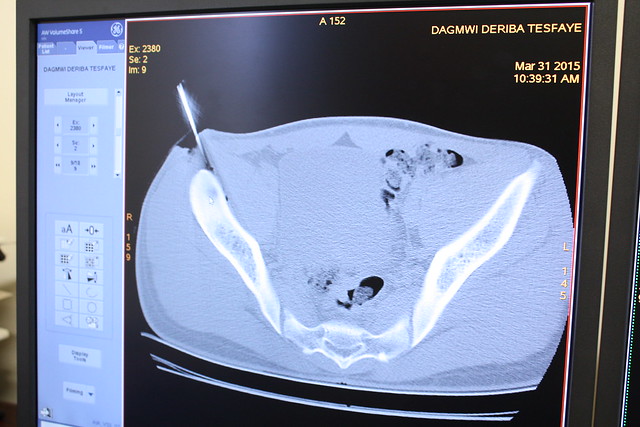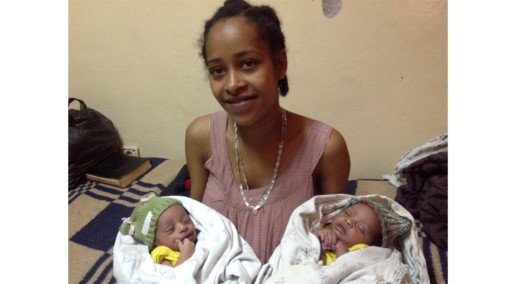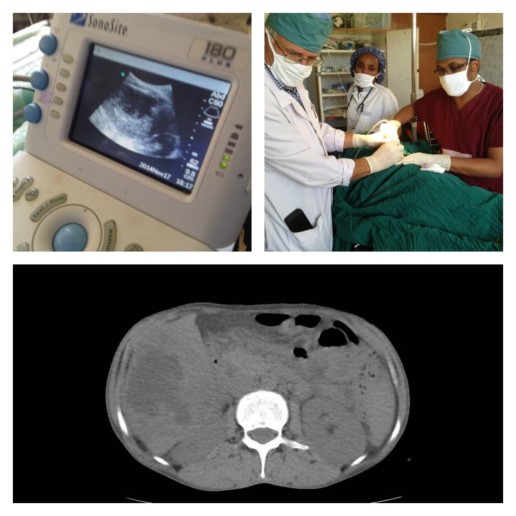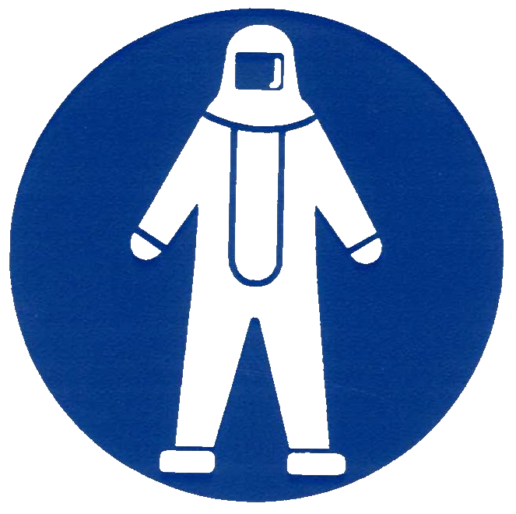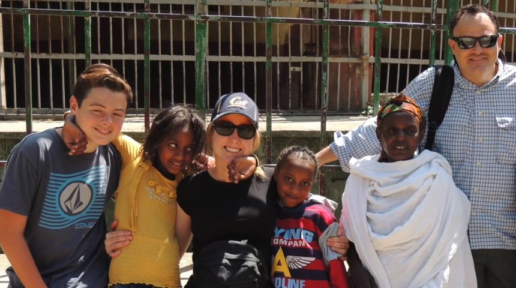The God of Ethiopia
This poem was written by a recent visitor to Soddo Christian Hospital. He wanted to remember his visit and this was the method God gave him for remembering his trip.
Where do we find God in Ethiopia,
Do we find Him in the bright, round eyes of a young boy in the hospital huddled close to his father?
Do we find Him in the quiet tears and prayers of a rounds team telling a patient he is going to die?
Do we find him in the tears of a young doctor fighting for a patient's eyesight and begging for God's providence?
Do we find Him in the sweet vespers hymns of a staff worn down by the cares of the day?
Do we find Him in the soft rain watering a thirsty land?
Yes, He is there!!
But He is also in the hearts of missionary men and women who have answered the call of God in their lives and given Him all they have.
And yes He is in the sweet minds and souls of those native Ethiopia's who have heard and heeded his call to salvation.
The God of Ethiopia permeates the heart and soul of the land.
Listen!
Hear His soft voice and footsteps all around you.
It was the best of times. It was the worst of times
Dear Friends and Family,
“It was the best of times. It was the worst of times,” Charles Dickens, The Tale of Two Cities. At Soddo Christian Hospital it is the best of times…we must be doing something right for the hospital is maxed out. But this makes it the worst of times… because the hospital is maxed out! Last month we had 92 women giving birth at our hospital, a new record. On top of the maternity rate rising, our nursing and pediatric staff are overwhelmed with the many sick babies that are born here, as well as those sick infants that are delivered at health centers and by home birth and transferred here for care. These babies born outside our hospital are admitted along with their mother into our maternity department. They require antibiotics and intensive nursing care oftentimes for up to a week or more. These patients require a hospital bed and often times a private room for heat. We do not have a neonatal nursery. Some of our mothers have to be delivered early due to severe high blood pressure or severe hemorrhage. Currently we have two babies, one born 10 weeks early and the other 11. They will require a long hospital stay to survive. By the way, most of these babies that stay here for a long time are underwritten by our maternal benevolent fund. Many of you have been so gracious to contribute to this fund. In the past our mothers went home 6 hours after delivery, but now thanks to the good care they receive from Dr. Ayers, our pediatrician and our family doctor, Dr. Becky McClaren, our healthy babies stay a minimum of 24 hours before discharge. We have 15 postpartum, GYN surgery beds in the maternity ward…compared to 30 in the other wards. This is due to the fact that we have a labor room and a delivery room and two clinics operating in the same building.
With our increase in the numbers, we are simply busting out at the seams. We stuffed another bed into our already crowded three bed labor ward. The govt. has informed us that we need a minimum of six. I couldn’t agree more, but we have no space. We have two delivery tables side by side in our delivery room. One of them is our former Gyn exam table. It is now very common to have patients recovering from their surgeries lined up in beds down the hallway because there simply are no other beds or rooms available. We have a few private rooms but they remain full. Two weeks ago patient’s families were literally fighting in the hallway to be admitted into the only available private room.
On top of the maternity increase, our Gyn patient load is escalating. During our two Gyn clinic days, Monday and Thursday, it is not unusual for me to get home at 8 PM. We then have two full surgery days on Tuesdays and Friday with a make-up day on Wednesday. All this to say….It is the best of times (because we are growing) and the worst of times, (because we are overworked and out of space)! We are working on a creative plan to add more clinic space thus creating more bed space. St.ay tuned for the details! –An update from Dr. Mark and Allison Karnes, October 2015
Two recovering surgical patients in the overcrowded hallway in the OB ward

A day in the life of a Soddo Christian Hospital team member
"A man has been stabbed in the neck. He is going to die."
These words, spoken calmly and as a matter of fact by the ICU head nurse, came as we were doing an early morning ward round prior to our planned weekend getaway to nearby Awassa. Glancing up at Dr. Ryan and Dr. Kyley, our visiting maxillofacial surgeons from the St.ates; our eyes met and without much ado, hurried to the emergency department. Reports of a large wound at the back of his neck with bone visible and a smaller wound in his anterior neck, among other injuries, made us realize that the best place to care for the patient was in the operating suite.
Meanwhile, the entourage surrounding the patient arrived in the OR with his relatives commandeering the stretcher, bringing him to the OR via the shortest route through the back door. Having gone in head first, the stretcher could not be turned around and had to be reversed into the corridor for a 180 degree spin and re-entry made, allowing a hurried transfer onto the operating table. Never mind the ABC’s of airway, breathing, etc in this race to get him to the destination.
"Oxygen, mask, laryngoscope" barks Kyley to the man standing next to him. A blank look in reply, the commands were to no avail as he was the patient's brother, not an OR worker. Amidst the chaotic, frantic activity, equipment arrived after what seemed an eternity. Blood miraculously materialized in record time, (thanks to the medical director's dash to the blood bank) and was quickly administered after a dunk in warm water. An emergency crico-thyroidotomy was necessitated to secure his airway as we were unable to effectively ventilate him with bag and mask. All along, the maxillofacial surgeons orchestrated the airway and resuscitation.
The neck injury was a through and through stab wound, entering from the posterior neck and exiting anteriorly, severing several healthy arteries supplying the posterior neck muscles. Brachial plexus, trachea, esophagus and the great vessels of the neck were spared anteriorly. Other major injuries included two deep lacerations into his left proximal thigh, a through and through laceration of one hand and another into the knuckles of his other hand.
It all ended well, the patient woke up with smiles.
[ois skin="Blog Post Share"]
“Now I will kick a football,” she laughed as she moved her new knee.
This is sweet Birhana from the Jinka area; which is located near the Kenya border. She has endured 14 years of pain. Birhana came to Soddo Christian Hospital 3 years ago and was told she needed a new knee, but at that time a total joint replacement was not an option here at SCH, and the replacement parts she needed were not available anywhere in Ethiopia.
This week Dr. Clint Barnett from Texas arrived at our hospital and 18 knees were completely replaced. 3 men and 15 women were given the opportunity to have a life without pain, (something so many of us take for granted). These knees were done using total joint replacements. Birhana was among those so happy to be called this week to come and receive a new knee!! She could barely contain her joy, as she smiled and laughed. “Now I will kick a football,” she laughed as she moved her new knee. “I love you and Soddo Christian Hospital.”
Birhana shared at Soddo Christian Hospital chapel, her joy and thankfulness shining so bright. Dr. Clint Barnett shared, "These are just replacement parts, made by man, and of metal, not made of bone. They give the opportunity at a better life, one without pain and with more physical capabilities. However God longs to have our hearts, to heal our hearts, and more important than having a new knee, is knowing that you have eternal life." God is doing beautiful things here at SCH, both through physical healing and through spiritual salvation. All the glory is His, He is mighty to heal, mighty to save!!
Fun fact: The average size of a replacement knee for women in the US is #5 but our Ethiopian friends were smalls. Dr. Barnett did five #1's in one week! In fact, we had to send for more small sizes from the US and our recent visitors brought them while Dr. Barnett was here.
[ois skin="Blog Post Share"]
God is using a CT scanner to reach five million Ethiopians with the Gospel
In 2013, an anonymous donor gave nearly $1 million in equipment to Soddo Christian Hospital. While the donation contained dozens of important items, the gem of the collection was a brand new computed tomography (CT) scanner. By itself, this one piece of equipment is helping us spread the Gospel to the five million people in our region of Ethiopia.
Here’s how.
CT technology produces tomographic images (literally layered slices) of the inside of a patient’s body. Think of a standard x-ray machine, such as the kind you might have experienced if you broke your arm as a child. That type of machine can produce only one snap shot of a patient. But a CT scanner can produce a picture of each layer of the patient, giving us a vastly greater amount of information, which in turn helps us make much more accurate diagnoses, and guide more effective treatments for patients. It’s not hard to see why a CT scanner has become an important tool for any hospital to have.
And, currently, we have the only CT scanner for our region of five million people.
What does this mean in practical terms? It means that patients from all across our region, many of whom lives hundreds of kilometers away, come here to Soddo Christian Hospital for their treatment because they require a CT scanner. And each one of these patients receives the Gospel message from our staff. In fact, orthopedic patients (those needing treatment on their bones) are the most frequently in need of CT imaging, and these patients tend to have long hospital stays (often lasting weeks) as they recover from surgery, which means we can share the Gospel with them over and over again, and disciple those who receive Christ!

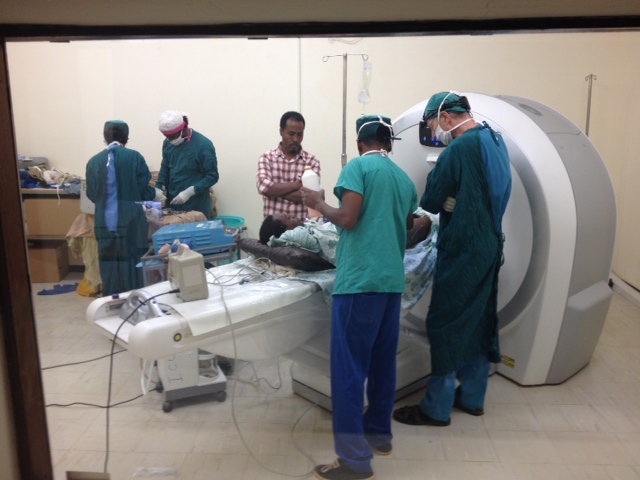
Recently, two of our physicians - orthopedic surgeon Duane Anderson and radiologist Karl Roth - performed an extremely advanced procedure using the CT scanner. Called a CT-guided biopsy, this procedure is only performed in a handful of hospitals in the US. In February, a patient named Dagmwi came to us with a suspicious bone tumor in his pelvis. Guided by images that Dr. Roth produced on the CT scanner, Dr. Anderson was able to accurately insert a needle into the tumor and extract a sample for analysis. The root issue turned out to be an infection, and Dagmwi was placed on antibiotics. Without the CT-guided biopsy, Dagmwi would have had to undergo a complicated surgery in order to diagnose the problem.
This story is just one example of the power of the CT scanner that God has blessed us with. He’s using this tool to draw patients like Dagmwi to our hospital for treatment. We’re able to provide high-quality care, and we’re also able to share the love of Jesus Christ. It’s a winning combination that is seeing Ethiopians brought to Christ every week. We praise God for this gift, and we look forward to using it for His glory for years to come.
[ois skin="Blog Post Share"]
A Team Effort
The hospital has been buzzing lately about a young woman whose life was saved. And with good reason! She may be one of only a few patients to be mechanically ventilated and survive in this part of Ethiopia.
Tseganesh was pregnant and getting near term, when she started feeling bad. She went to another health care facility, and after three days in the hospital, was discharged. Unfortunately, a few days after that, she started having seizures. Those in the medical community will recognize exactly what Tseganesh had. It is called eclampsia and it is life-threatening to both mom and baby.
When she came to Soddo Christian Hospital, she had been seizing for ten straight hours. She was rushed to the OR for immediate Cesarean delivery. It was two beautiful babies. Twins! The babies seemed okay, but Tseganesh was getting much worse. Though the seizures were controlled with medications, brain damage was suspected. At one point in the surgery, she even arrested briefly. Fluid had begun to fill her lungs, and it appeared that she aspirated as well during the seizures. She was critically ill to the point of near-death.
After the surgery, it was clear that Tseganesh was not going to breathe on her own. We made the decision to mechanically ventilate her, but with great trepidation. You see, our ventilator is brand new, and our staff are not very experienced with it. Ventilating a patient like this would be common in the West, but here, it could be a death sentence. Our physician and nursing staff were committed to saving this young woman's life. So, day and night, a staff member was at her bedside. Turning her, keeping her breathing tube clear, monitoring the ventilator. And praying. We all took turns, and begged God to save this young woman's life. And after five days on the ventilator, her lungs had cleared to the point where she could breathe on her own.
At long last, she was finally able to hold and feed her two precious babies!
We praise God for so many things in this young woman's story:
- that He united our staff to work hard and provide excellent medical care
- that our prayers were answered, and her life was saved
- that she appears to have no brain damage from prolonged seizing and cardiac arrest
- that the two twin babies are healthy and thriving
- that willing donors from abroad gave money so that the hospital could procure a quality ventilator

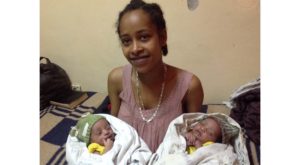
[ois skin="Blog Post Share"]
Teamwork at SCH

As our capabilities at Soddo Christian Hospital expand, we are working together as a team to make diagnoses, and provide cutting edge treatment for patients. The other day, we had a woman present to the Emergency Room with upper abdominal pain and fever. The ER docs did a great job with the bedside ultrasound finding what appeared to be either a fluid collection or a mass in her liver (top left picture). Then, a CT scan by the Radiology Department confirmed that it was indeed an abscess in the liver (lower pane). Finally, our expert radiologist teamed up with our surgeons (that's our chief resident Dr. Segni in the top right picture) to do an ultrasound-guided percutaneous drain. This is a minimally invasive way to get the infection out instead of a big operation.
We are so proud of all of our services working together to get the best outcomes for patients! Praise God for new technologies and teamwork!
[ois skin="Blog Post Share"]
Ebola Training
The current Ebola epidemic is devastating. Already, it has taken more lives than all other Ebola epidemics before it. We pray that this deadly diseases does not come to Ethiopia. But if it does, we want to be prepared. And to keep our staff as safe as possible.
We have purchased Tyvek suits, goggles, boots, masks. Everything that we need to keep our providers safe. And this past month, we did some training with our nurses, on how to protect themselves if a suspected case came our way.

Neurosurgery at SCH?!?
What do you think happens when you combine the following:
- A country with the highest number of pedestrians struck by vehicles relative to cars on the road
- A brand new CT scanner among a population of 5 million people who previously had none
If you answered, “a lot of new diagnoses of head trauma”, you’d be right. Our CT scanner is practically smoking with all the head CTs for trauma that are being done. Most of the time, we find non-operative bleeds. But the last two weeks has been extraordinary. In September alone, we have taken seven patients to the OR with epidural and subdural hematomas that required emergency surgery.
 Above are just four of the actual scans done here in the past two weeks. And there are more! We’ve had great outcomes so far, and our surgery residents and staff are doing more emergent neurosurgery than they ever could have imagined.
Above are just four of the actual scans done here in the past two weeks. And there are more! We’ve had great outcomes so far, and our surgery residents and staff are doing more emergent neurosurgery than they ever could have imagined.
We praise God that He provided through our donors. Through your generosity, we got a CT scanner. And it is being used for His glory as lives are being saved. May the name of Christ go forth in southern Ethiopia as we use this gift. That is our prayer.
Fantastic Visitor Video!
Andre Ishak, his wife Jeanine, and their son Brandon just visited us for about 10 days. Dr. Ishak is a Hand Surgeon, and he performed many life-altering and wonderful surgeries during their time here. We were very blessed to have them. Check out the amazing video they made to document their trip!
Ethiopia 2014 from Andre Ishak on Vimeo.

